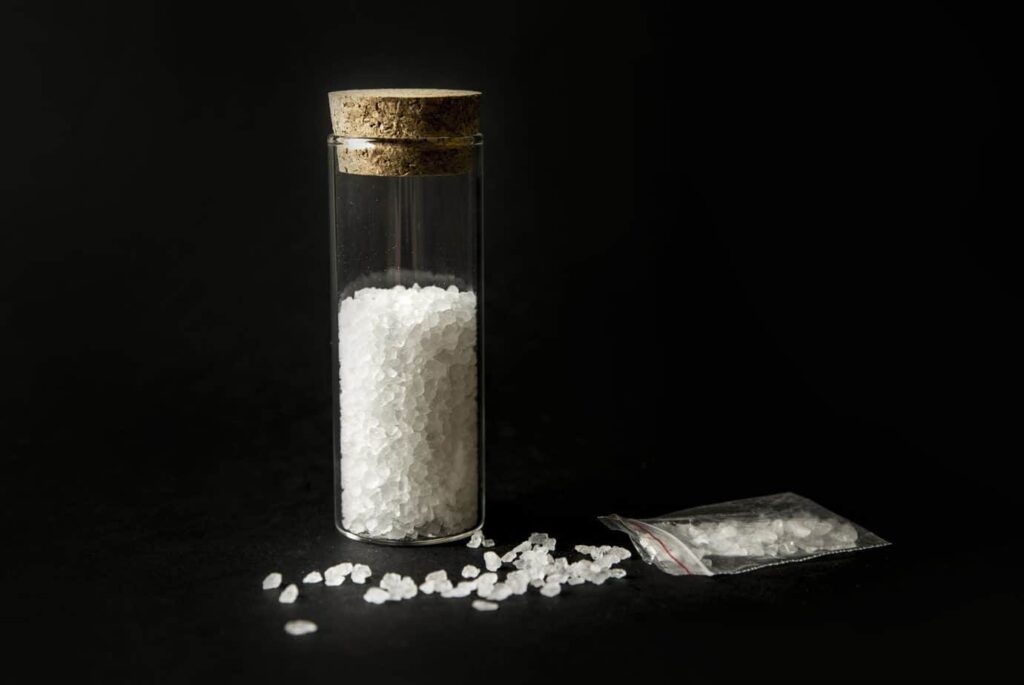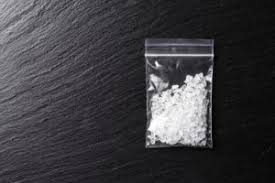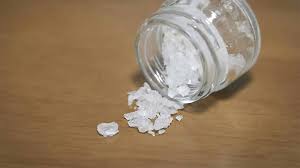Uncategorized
A Comprehensive Guide on MDPV: Understanding Its Production and Online Availability
Introduction
Methylenedioxypyrovalerone (MDPV) is a synthetic stimulant that has gained significant attention for its potent effects and potential for abuse. Known for its association with “bath salts,” MDPV is a subject of concern among healthcare professionals and law enforcement agencies. This blog post will provide an in-depth exploration of MDPV, including the chemical processes involved in its production, the legal and ethical considerations surrounding its manufacture, and the risks associated with buying MDPV online. This comprehensive guide aims to educate readers on the complexities and dangers of MDPV.
Understanding MDPV
What is MDPV?
MDPV is a synthetic cathinone, a class of psychoactive substances chemically similar to naturally occurring cathinones found in the khat plant. It is known for its powerful stimulant effects, which can include euphoria, increased energy, and heightened alertness. However, MDPV also carries significant risks, including severe psychological and physical health consequences.

Chemical Structure and Properties
MDPV has the chemical formula C16H21NO3 and a molecular weight of 275.35 g/mol. Its structure consists of a pyrovalerone backbone with a methylenedioxy group attached, contributing to its potent psychoactive effects. MDPV is typically found as a white or off-white crystalline powder, which can be ingested, snorted, smoked, or injected.
The Chemical Synthesis of MDPV
Precursor Chemicals
The synthesis of MDPV involves several precursor chemicals and reagents. The process is complex and requires a solid understanding of organic chemistry. Some of the primary precursor chemicals used in the production of MDPV include:
- Propiophenone: A key starting material in the synthesis of MDPV.
- Piperonal: Often used to introduce the methylenedioxy group.
- Bromine: Used in halogenation reactions.
- Alkali metal hydroxides: Such as sodium or potassium hydroxide, used in various reaction steps.
Step-by-Step Synthesis
- Bromination of Propiophenone: Propiophenone is brominated to form 1-(4-bromophenyl)-2-propanone.
- Reaction with Piperonal: The brominated product is then reacted with piperonal under basic conditions to form the intermediate compound.
- Cyclization and Reduction: The intermediate undergoes cyclization and reduction to yield MDPV.
Each step in the synthesis process requires precise control of reaction conditions, including temperature, pH, and reagent concentrations. The complexity of the synthesis highlights the challenges and dangers associated with producing MDPV outside of a controlled laboratory environment.

Risks and Dangers of Home Synthesis
Attempting to synthesize MDPV at home or in an uncontrolled setting is extremely dangerous. The process involves handling hazardous chemicals and requires specialized knowledge and equipment. Additionally, the production of MDPV is illegal in many jurisdictions, and individuals caught manufacturing the substance can face severe legal consequences. The potential for contamination, incorrect dosages, and unintended chemical reactions also poses significant health risks to the manufacturer and others.
Legal and Ethical Considerations
Legal Status of MDPV
MDPV is classified as a Schedule I controlled substance in many countries, including the United States. This classification indicates that MDPV has a high potential for abuse and no accepted medical use. The production, distribution, and possession of MDPV are illegal and subject to severe penalties.
Ethical Implications
The production and distribution of MDPV raise numerous ethical concerns. The substance’s high potential for abuse and associated health risks make it a significant public health concern. Individuals involved in the manufacture or sale of MDPV contribute to the spread of a dangerous substance and the harm it causes to users and communities.
Buying MDPV Online: Risks and Realities
Availability on the Dark Web
Despite its illegal status, MDPV is often available for purchase on the dark web. Online marketplaces operating on the dark web allow users to buy a variety of illicit substances, including MDPV, with relative anonymity. However, purchasing drugs from these sources carries significant risks, including the potential for scams, contaminated products, and legal repercussions.
Risks of Online Purchases
- Product Purity and Safety: Drugs purchased online, especially from unregulated sources, may be contaminated with other harmful substances. The purity and dosage of MDPV in these products are often unknown, increasing the risk of overdose and adverse effects.
- Legal Consequences: Buying MDPV online is illegal and can result in severe legal penalties, including fines and imprisonment. Law enforcement agencies actively monitor online drug sales and may use sophisticated techniques to track and apprehend buyers.
- Health Risks: Using MDPV carries significant health risks, including addiction, mental health disorders, cardiovascular issues, and severe psychological effects. The unpredictable nature of the drug and the potential for contaminated products further exacerbate these risks.
Recognizing Scams and Fraud
Online drug markets are rife with scams and fraudulent sellers. Individuals attempting to buy MDPV online may encounter fake listings, receive products that do not contain the advertised substance, or lose their money to unscrupulous sellers. Recognizing and avoiding these scams requires vigilance and skepticism, but the inherent risks of buying drugs online make it an unwise endeavor.
Health Risks and Consequences of MDPV Use
Short-Term Effects
MDPV is known for its powerful stimulant effects, which can include:
- Euphoria: Intense feelings of pleasure and well-being.
- Increased Energy: Enhanced physical and mental energy levels.
- Alertness: Improved focus and concentration.
- Sociability: Increased sociability and talkativeness.
However, these effects are accompanied by significant adverse reactions, including:
- Anxiety and Paranoia: Intense feelings of anxiety and paranoia, often leading to panic attacks.
- Psychosis: Hallucinations, delusions, and other psychotic symptoms.
- Insomnia: Difficulty sleeping or maintaining a regular sleep pattern.
- Agitation: Restlessness and irritability.
- Cardiovascular Issues: Elevated heart rate, increased blood pressure, and risk of heart attack or stroke.
Long-Term Effects
Prolonged use of MDPV can lead to severe health consequences, including:
- Addiction: MDPV has a high potential for addiction, leading to compulsive drug-seeking behavior.
- Cognitive Impairment: Long-term use can result in memory problems, cognitive deficits, and impaired decision-making.
- Mental Health Disorders: Increased risk of developing anxiety, depression, and other mental health disorders.
- Physical Health Decline: Chronic use can lead to weight loss, malnutrition, and overall physical health deterioration.
Treatment and Recovery
Addressing MDPV Addiction
Treating MDPV addiction requires a comprehensive approach that addresses both the physical and psychological aspects of dependence. Detoxification, behavioral therapy, and counseling are essential components of a successful treatment plan.
Detoxification and Medical Management
Detoxification involves the gradual removal of MDPV from the body while managing withdrawal symptoms. Medical supervision is crucial during this process to ensure the safety and well-being of the individual.
Behavioral Therapy and Counseling
Behavioral therapy and counseling aim to address the underlying psychological factors contributing to MDPV addiction. Cognitive-behavioral therapy (CBT) is commonly used to help individuals develop coping strategies, manage cravings, and prevent relapse.
Support Groups and Aftercare
Support groups, such as Narcotics Anonymous (NA), provide a valuable source of peer support and encouragement during the recovery process. Aftercare programs, including continued therapy and monitoring, help individuals maintain their sobriety and prevent relapse.

Conclusion
Methylenedioxypyrovalerone (MDPV) is a powerful synthetic stimulant with significant risks and potential for abuse. Its production involves complex chemical processes that are dangerous and illegal to attempt outside of controlled environments. The availability of MDPV on the dark web highlights the ongoing challenges in regulating and controlling the distribution of synthetic drugs. Individuals considering the purchase or use of MDPV should be aware of the severe health risks, legal consequences, and ethical implications associated with this substance.
Efforts to combat MDPV abuse and support those struggling with addiction require a multifaceted approach, including education, regulation, and access to effective treatment and recovery resources. By understanding the dangers of MDPV and promoting safe, healthy alternatives, we can work towards reducing the harm caused by this and other synthetic stimulants.
